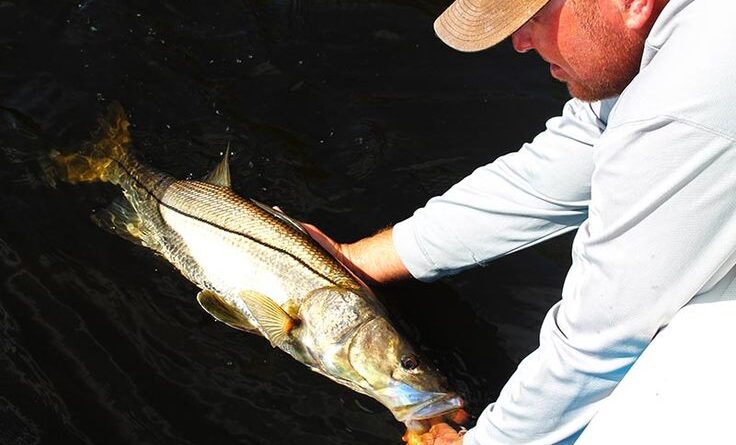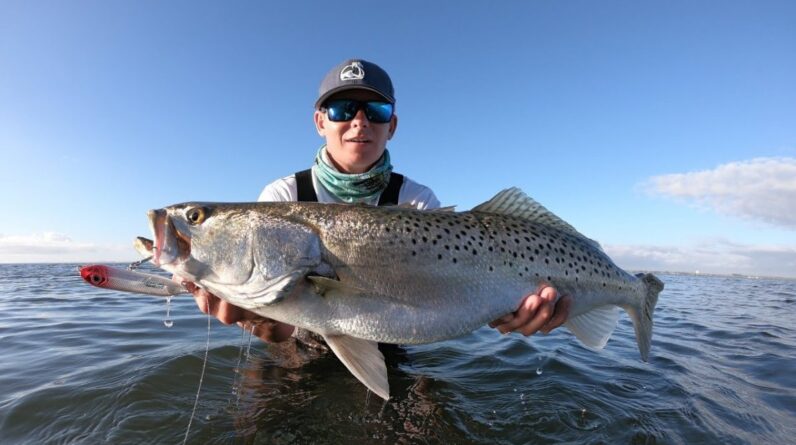Kayak fishing has rapidly gained popularity among anglers of all skill levels. The combination of adventure, accessibility, and the unique experience of being close to the water makes it an enticing pursuit. This comprehensive guide will take you through essential kayak fishing techniques, ensuring you’re well-equipped to make the most of your time on the water. From selecting the right gear to mastering advanced fishing strategies, we cover it all.
Kayak fishing offers an intimate connection with nature, allowing anglers to explore areas that larger boats can’t reach. The stealth and maneuverability of a kayak make it easier to approach fish without spooking them, increasing your chances of a successful catch. Whether you’re a novice or a seasoned angler, understanding the nuances of kayak fishing can significantly enhance your experience.
Our team at Cheerfulfisherman.com, with years of hands-on experience, brings you these techniques that will help you improve your fishing using a kayak as an essential tool. We delve into choosing the ideal kayak for your specific needs, the best practices for staying safe on the water, and how to effectively use various types of fishing equipment from your kayak. Additionally, we provide insights into understanding water currents, weather conditions, and fish behavior to help you become a more proficient kayak angler. Join us as we explore the exciting world of kayak fishing and help you turn every outing into an adventure filled with unforgettable moments and impressive catches.
Table of Contents
- Introduction to Kayak Fishing
- Choosing the Right Kayak
- Essential Kayak Fishing Gear
- Kayak Fishing Safety Tips
- Basic Kayak Fishing Techniques
- Advanced Kayak Fishing Techniques
- Kayak Fishing in Different Environments
- Seasonal Kayak Fishing Tips
- Targeting Specific Species
- Kayak Fishing Maintenance and Care
- Community and Resources
- Conclusion
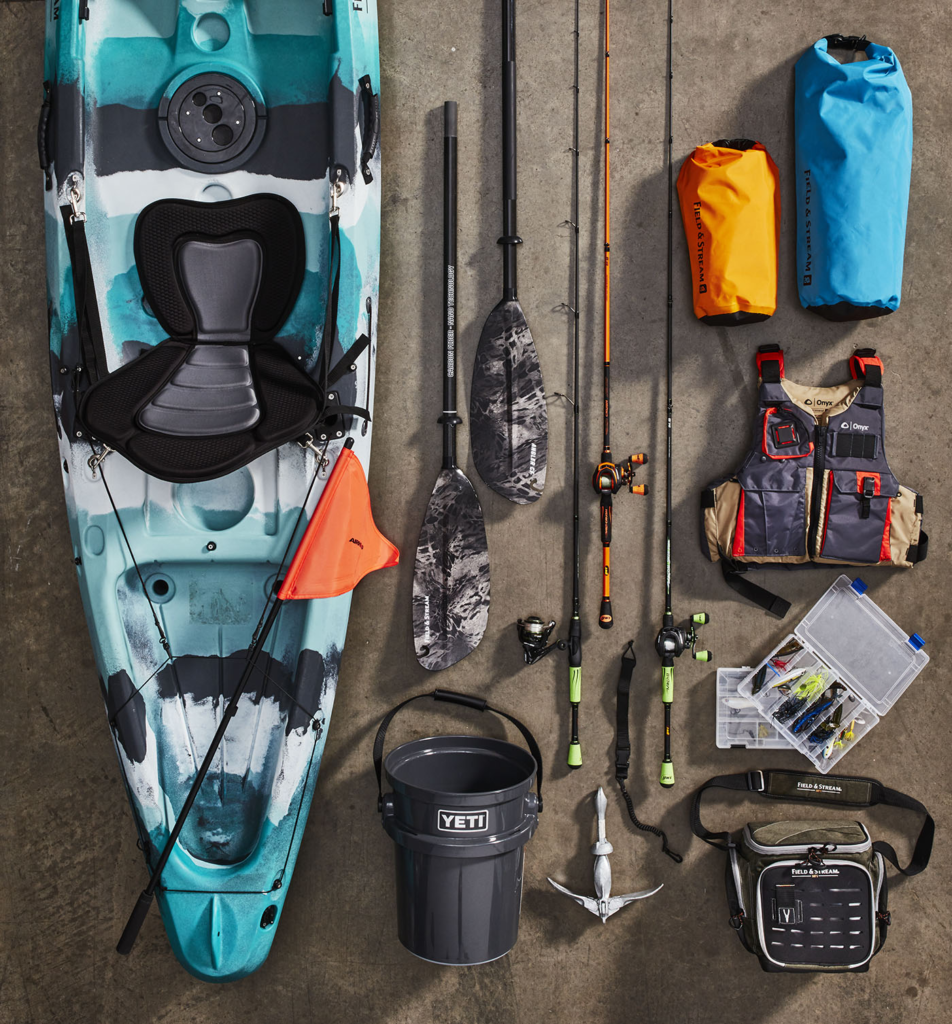
1. Introduction to Kayak Fishing
The Appeal of Kayak Fishing
Kayak fishing seamlessly combines the peacefulness of paddling with the excitement of angling. Unlike larger boats, kayaks can navigate through narrow waterways and shallow inlets, providing access to untouched and often secluded fishing spots that larger vessels cannot reach. The affordability and ease of transport make kayak fishing an attractive option for many enthusiasts, eliminating the need for trailers, boat ramps, and high fuel costs.
This accessibility opens up the sport to a wider audience, including those who may not have the resources for traditional boating. Additionally, the stealthy nature of kayaks allows anglers to approach fish without causing disturbance, increasing the chances of a successful catch. This intimate connection with nature, combined with the physical activity of paddling, offers a holistic outdoor experience that promotes both mental and physical well-being. Whether you’re a seasoned angler or a beginner looking to explore new waters, kayak fishing offers a unique and rewarding adventure.
History and Evolution
The origins of kayak fishing can be traced back to indigenous peoples who utilized kayaks for hunting and fishing. These early kayaks, crafted from wood and animal skins, were designed for stability and stealth in the water, allowing hunters to approach their prey quietly. Over time, kayak fishing has evolved significantly. Modern advancements in kayak design and fishing technology have transformed this ancient practice into a highly efficient and enjoyable activity.
Today’s kayaks are constructed from durable, lightweight materials, and often feature specialized equipment such as rod holders, GPS systems, and storage compartments. These innovations have made kayak fishing accessible to a wider audience, allowing enthusiasts to explore a variety of aquatic environments, from serene lakes to challenging ocean waters. Moreover, the sport has gained popularity due to its environmental benefits, as kayaks produce no pollution and allow for a more intimate connection with nature. Whether for sport or leisure, modern kayak fishing offers a unique blend of tradition and technology, appealing to both seasoned anglers and newcomers alike.
2. Choosing the Right Kayak
Types of Fishing Kayaks
Selecting the right kayak is crucial for your fishing success and comfort. Here are the main types:
- Sit-on-Top Kayaks: Ideal for fishing due to their stability and ease of use.
- Sit-Inside Kayaks: Better for colder waters and longer trips.
- Pedal Kayaks: Allow hands-free operation, giving you more control over your fishing rod.
- Inflatable Kayaks: Portable and easy to store, suitable for occasional use.
Key Features to Consider
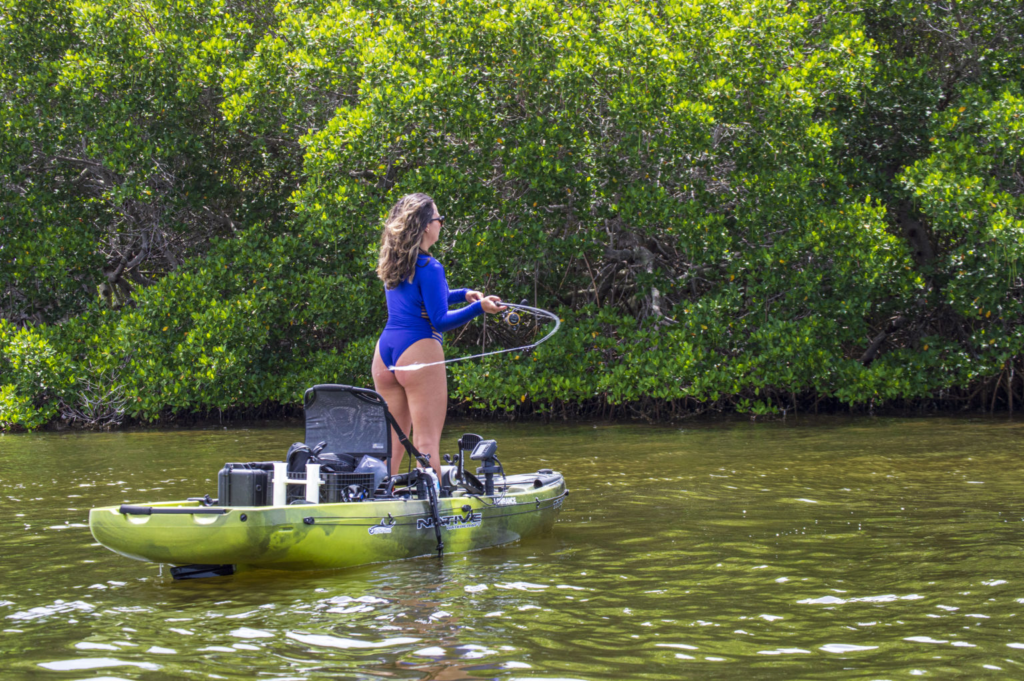
When choosing a fishing kayak, consider the following features:
- Stability: Essential for standing and casting.
- Storage Space: Necessary for keeping gear and caught fish.
- Comfort: Look for adjustable seats and footrests.
- Weight Capacity: Ensure it can support you and your gear.
- Portability: Consider the weight and ease of transport.
3. Essential Kayak Fishing Gear
Fishing Rods and Reels
Selecting the right fishing rod and reel can make a significant difference. Consider these options:
- Spinning Rods and Reels: Versatile and beginner-friendly.
- Baitcasting Rods and Reels: Offer more control and power.
- Fly Fishing Rods: For targeting specific species like trout and bass.
Tackle and Baits
Having a well-equipped tackle box is essential. Include:
- Lures: Such as crankbaits, spinnerbaits, and soft plastics.
- Hooks and Sinkers: Various sizes for different fish.
- Lines: Braided lines for strength, fluorocarbon for invisibility, and monofilament for versatility.
Safety Equipment
Never compromise on safety. Essential gear includes:
- Personal Flotation Device (PFD): A must-have for all kayakers.
- Whistle and Signal Devices: For attracting attention in emergencies.
- First Aid Kit: Basic medical supplies for minor injuries.
Additional Accessories
Enhance your fishing experience with these accessories:
- Rod Holders: For secure and convenient rod placement.
- Fish Finders: To locate fish and underwater structures.
- Anchor Systems: To keep your kayak stationary in currents.
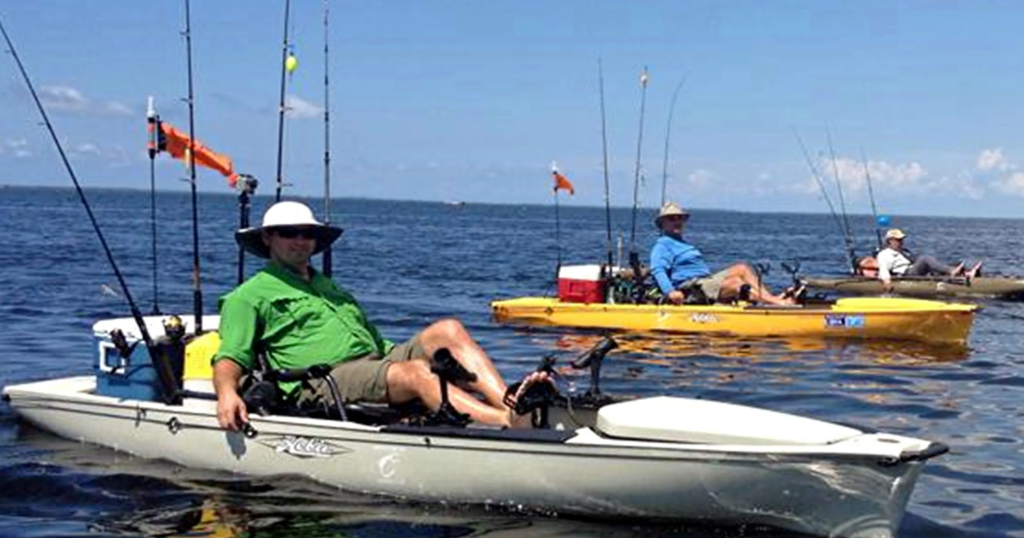
4. Kayak Fishing Safety Tips
Pre-Trip Preparations
Safety starts before you hit the water. Follow these steps:
- Check the Weather: Avoid fishing in severe weather conditions.
- Inform Someone: Let someone know your fishing plan and expected return.
- Inspect Your Gear: Ensure all equipment is in working order.
On-Water Safety Practices
While on the water, keep these safety practices in mind:
- Wear Your PFD: Always wear your personal flotation device.
- Stay Hydrated: Bring plenty of water and stay hydrated.
- Avoid Overloading: Do not exceed your kayak’s weight capacity.
Emergency Procedures
Be prepared for emergencies:
- Capsize Recovery: Practice self-rescue techniques.
- Communication: Keep a waterproof phone case or VHF radio for emergencies.
5. Basic Kayak Fishing Techniques
Paddling Techniques
Efficient paddling is crucial for maneuvering and positioning:
- Forward Stroke: The most common paddling technique for moving forward.
- Sweep Stroke: Used for turning your kayak.
- Draw Stroke: Moves your kayak sideways for better positioning.
Casting Techniques
Casting from a kayak requires precision and control:
- Overhead Cast: Suitable for long-distance casting.
- Sidearm Cast: Ideal for casting under obstacles.
- Pitching and Flipping: Techniques for accurate short-distance casting.
Retrieving Techniques
Different retrieving techniques attract different species:
- Steady Retrieve: Keeps your lure at a consistent depth.
- Jerk and Pause: Mimics the movement of injured prey.
- Stop and Go: Alternates between retrieving and pausing.

6. Advanced Kayak Fishing Techniques
Trolling from a Kayak
Trolling involves dragging a lure or bait behind your moving kayak:
- Speed Control: Maintain a consistent speed for effective trolling.
- Depth Management: Use weights or downriggers to control lure depth.
- Multiple Lines: Use rod holders to manage multiple lines for increased chances.
Kayak Positioning and Anchoring
Proper positioning can significantly improve your catch rate:
- Anchor Trolley System: Allows you to position your kayak accurately.
- Drift Anchors: Help control your drift in windy conditions.
- Stake-Out Poles: Useful for shallow waters.
Sight Fishing
Sight fishing involves spotting fish and casting directly to them:
- Polarized Sunglasses: Reduce glare and improve visibility.
- Stand-Up Fishing: Provides a better vantage point for spotting fish.
- Stealth Approach: Move slowly and quietly to avoid spooking fish.
7. Kayak Fishing in Different Environments
Freshwater Kayak Fishing
Freshwater bodies like lakes, rivers, and ponds offer diverse fishing opportunities:
- Lakes: Target bass, trout, and panfish.
- Rivers: Focus on moving water species like catfish and walleye.
- Ponds: Ideal for a relaxed fishing experience with species like bluegill and crappie.
Saltwater Kayak Fishing
Saltwater environments provide access to a wide range of species:
- Inshore Fishing: Target species like redfish, snook, and sea trout.
- Offshore Fishing: Requires more preparation but can yield larger species like tuna and marlin.
- Estuaries and Bays: Abundant in species and often calmer waters.

Kayak Fishing in Different Climates
Adapt your techniques based on climate conditions:
- Cold Weather Fishing: Dress in layers and use sit-inside kayaks for insulation.
- Warm Weather Fishing: Stay hydrated and use sun protection.
- Rainy Conditions: Ensure your gear is waterproof and visibility is not compromised.
8. Seasonal Kayak Fishing Tips
Spring Fishing
Spring brings active fish and diverse opportunities:
- Spawning Season: Target species during their spawning runs.
- Warming Waters: Fish become more active as temperatures rise.
Summer Fishing
Summer can be challenging due to higher temperatures:
- Early Morning and Late Evening: Fish are more active during cooler parts of the day.
- Deeper Waters: Fish often move to deeper, cooler waters.
Fall Fishing
Fall offers excellent fishing opportunities as fish prepare for winter:
- Feeding Frenzy: Fish are more aggressive in feeding.
- Cooler Temperatures: Comfortable for longer fishing trips.
Winter Fishing
Winter requires special preparation but can be rewarding:
- Slow Retrieval: Fish are less active in cold waters.
- Ice Fishing: An alternative method if waters freeze over.

9. Targeting Specific Species
Bass Fishing Techniques
Bass are a popular target for kayak anglers:
- Lure Selection: Use crankbaits, spinnerbaits, and plastic worms.
- Structure Fishing: Target areas with underwater structures like logs and vegetation.
Trout Fishing Techniques
Trout require a different approach:
- Fly Fishing: Effective in streams and rivers.
- Live Bait: Use worms or minnows for natural presentation.
Saltwater Species Techniques
Targeting saltwater species offers unique challenges:
- Redfish: Use topwater lures and shallow water tactics.
- Snook: Focus on mangroves and docks with live bait or jigs.
- Tuna: Requires offshore fishing with heavy-duty gear.

10. Kayak Fishing Maintenance and Care
Kayak Maintenance
Regular maintenance ensures your kayak’s longevity:
- Cleaning: Rinse your kayak after each use, especially after saltwater fishing.
- Storage: Store in a dry, shaded area to prevent UV damage.
- Inspection: Regularly check for leaks or damage.
Gear Care
Proper gear maintenance enhances performance:
- Rod and Reel Cleaning: Rinse and lubricate after each use.
- Tackle Box Organization: Keep your tackle organized and replace damaged lures and hooks.
- Battery Maintenance: If using electronics, ensure batteries are charged and stored properly.
11. Community and Resources
Joining Kayak Fishing Groups
Connecting with other kayak anglers can provide valuable insights:
- Local Clubs: Join local kayak fishing clubs for events and meet-ups.
- Online Forums: Participate in online communities to share tips and experiences.
Educational Resources
Expand your knowledge with these resources:
- Books and Magazines: Provide in-depth techniques and stories.
- YouTube Channels: Offer visual guides and tutorials.
- Fishing Apps: Track catches, weather conditions, and locations.
12. Conclusion
Kayak fishing offers a rewarding and immersive experience that merges the thrill of fishing with the serene pleasure of paddling. The unique perspective from a kayak allows anglers to access remote fishing spots that are often unreachable by larger boats, providing an intimate connection with nature. Mastering the techniques outlined in this guide will not only enhance your skills but also significantly increase your chances of success on the water. Whether you’re a novice or a seasoned angler, preparation is crucial.
This includes selecting the right gear, understanding weather conditions, and familiarizing yourself with the waterway. Practice is equally important, as it builds confidence and hones your ability to handle the kayak and fishing equipment simultaneously. Beyond the technical aspects, a deep appreciation for the sport and the natural environment enriches the experience. Respect for wildlife and adherence to conservation principles ensure that this pastime remains sustainable for future generations. Embrace the journey, savor the moments of tranquility, and cherish the thrill of the catch. Happy fishing!

This guide provides a thorough overview of kayak fishing techniques, ensuring that anglers of all levels can improve their skills and enjoy the sport to its fullest. For continued learning, consider engaging with the fishing community and exploring additional resources to stay updated on the latest techniques and trends in kayak fishing.




